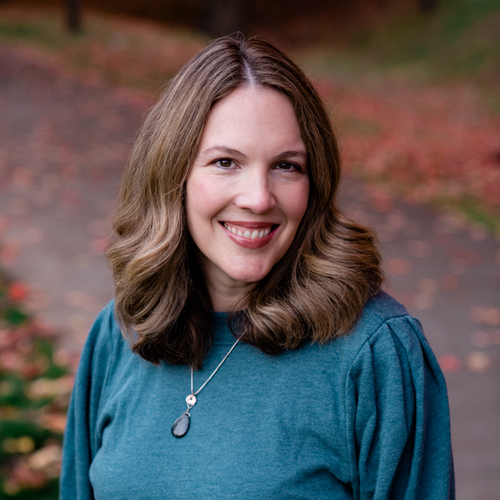In this day and age, avoiding all plastic packaging is nearly impossible. We’re all aware of the impacts plastic is having on our environment but did you know plastic packaging can also impact our health?
From a health perspective, some plastics are better than others so it’s important to know a little more about each type. The little numbers on the bottom of many types of plastic are called resin identification codes and these can help you determine if they are in the “bad” or “not so bad” category.
Side note: The industry would love for us to think of these as “recycling codes” but less than 5% of plastics are actually recycled so I like to call it what it is – a very clever decades-long marketing strategy by the plastics/oil industry to make us feel better about buying things in plastic.
Since we don’t truly know the chemical composition of any plastics (these are considered proprietary) no plastic should be considered totally safe, but let’s dive into what each number means:
#1 – PET (Polyethylene Terephthalate)
PET, or polyethylene terephthalate plastics are one of the most common types of plastics. Under certain conditions (when exposed to heat, oil, acidity, or abrasion), there is evidence indicating this plastic may leach phthalates and antimony trioxide. Risk of leaching increases with each use so these really are single-use only plastics. Phthalates are well established endocrine-disrupting chemicals with a long list of health risks. (PMID:20368129; PMID17707454)
Commonly used with: Soda bottles, water bottles, shampoo bottles, mouthwash bottles, peanut butter jars, salad dressing containers, condiment containers (mayonnaise, mustard, ketchup) etc.
#2 – HDPE (High-Density Polyethylene)
HDPE has historically been known as one of the least toxic types of plastics. Unfortunately, the EPA has recently determined that liquid products packaged in hard HDPE containers treated with fluorination technology (adding fluorine gas to form a barrier on the plastic’s surface and strengthen the packaging) could leach PFAS chemicals into products from the container walls. The total amount of PFAS leaching into the products appears to increase over storage time and can result in high contamination levels. Until we know more, I’m avoiding any liquids with a “2” resin code on the bottom when possible.
Commonly used with: cosmetics, shampoo, detergents, household cleaners, milk/juice containers, cereal and snack liners, grocery bags
#3 – PVC (Polyvinyl Chloride)
PVC or polyvinyl chloride is one of the most toxic types of plastics. Its nickname is “the poison plastic” because it contains numerous toxins that it can leach throughout its life cycle. Because PVC plastic is hard and rigid, phthalates, lead, cadmium and tin can all be added for greater flexibility. BPA is also commonly found in PVC plastics.
Commonly used with: shower curtains, garden hoses, food bottles, and cling wraps in addition to plumbing pipes, etc.
#4 – LDPE (Low-Density Polyethylene)
Typically softer plastics – LDPE is considered one of the least toxic types of plastics, with a low risk of leaching unless heated.
Commonly used with: plastic bags for frozen fruits & veggies, bread bags, grocery store bags, squeezable bottles
#5 – PP (Polypropylene)
Historically known as one of the more stable, “safer” plastics. This type of plastic often appears cloudy or opaque.
Commonly used with: yogurt cups, cottage cheese and margarine tubs, pasta strainers
Note about plastic #’s 4 and 5 – although these are generally considered safe, they have been identified as plastics that can withstand fluorination treatment so be mindful of the potential for PFAS contamination for any liquids stored in harder LDPE (#4) or PP (#5) plastics until we know more about how widespread fluorination is.
#6 – PS (Polystyrene)
Like PVC, considered one of the worst types of plastic. Made from benzene (a known carcinogen) and styrene (a suspected carcinogen) polystyrene, or styrofoam, leaches styrene into foods or drinks that come in contact with it. This leaching increases in the presence of heat and or fats.
Commonly used with: Plastic utensils, hot drink lids, styrofoam to-go or drink containers
#7 – other
This is a catch-all category for all other types of plastic. Polycarbonate plastics often contain BPA or its replacements (BPS/BPF), which are added to plastics to make them rigid or hard. Bisphenols are not tightly bound to plastic and easily migrate into contents.
Conditions that promote leaching:
As noted earlier, there are some conditions that will increase the likelihood that chemicals from plastics will leach into the package contents:
- Heat
- Oil
- Acidity
- Abrasion
What can we do to reduce contamination/leaching risk?
- Whenever possible, choose foods that are packaged in glass over plastic, especially foods that are acidic, like pickles, fermented foods, tomatoes or ketchup, and foods that are oily, like oils, mayonnaise, nut butters, salad dressings, etc.
- Swap plastic storage containers for glass or stainless steel – there are very affordable options that will allow you to ditch your plastic storage containers for good!
- Never heat foods in plastic (oven or microwave) – this is one of the main things that causes plastic to break down and leach chemicals into foods or drinks. Those plastic veggie or rice steaming pouches? Best to avoid.
- Avoid putting plastic in the dishwasher – Ever wonder why plastic storage containers go from clear to foggy? This repeated heat exposure starts to break the plastic down, increasing the amount of leaching that occurs.
- Opt for reusable stainless steel water or drink bottles, and avoid those packaged in plastic, especially if they have been exposed to heat. Think water bottles left in a hot car.
- Avoid any liquids packaged in #2 HDPE, including cosmetics and other personal care products, until we know more about the extent of PFAS contamination.
- Purchase take-out from restaurants that don’t use plastic or styrofoam containers. Have you ever had styrofoam melt into your take-out food? I have and it’s not very appetizing!
- Avoid eating directly out of plastic containers or using abrasive sponges when cleaning. Abrasion also causes plastics to break down, increasing leaching risk.
- Reduce storage times – throw out older personal care products, cosmetics, or foods/drinks that are packaged in plastic.
To make it easier, remember this rhyme: 5, 4, and sometimes 2 – all the rest are bad for you. 🙂
Have you started to move away from plastic packaging when possible? Several of my favorite brands for personal care products have already made the switch to glass or paperboard. See all my faves + great non-plastic kitchen options in my SHOP page.
Related Articles:
https://www.ecowatch.com/plastic-recycling-myth-2647706452.html?rebelltitem=2&fbclid=IwAR106VY0mX_feiiLXY0uPXBRCxSKWHOSUcnIEZLyLBPZLRkhfW6DdMzHj-4#rebelltitem2
https://blogs.edf.org/health/2021/07/07/beyond-paper-pfas/








0 Comments